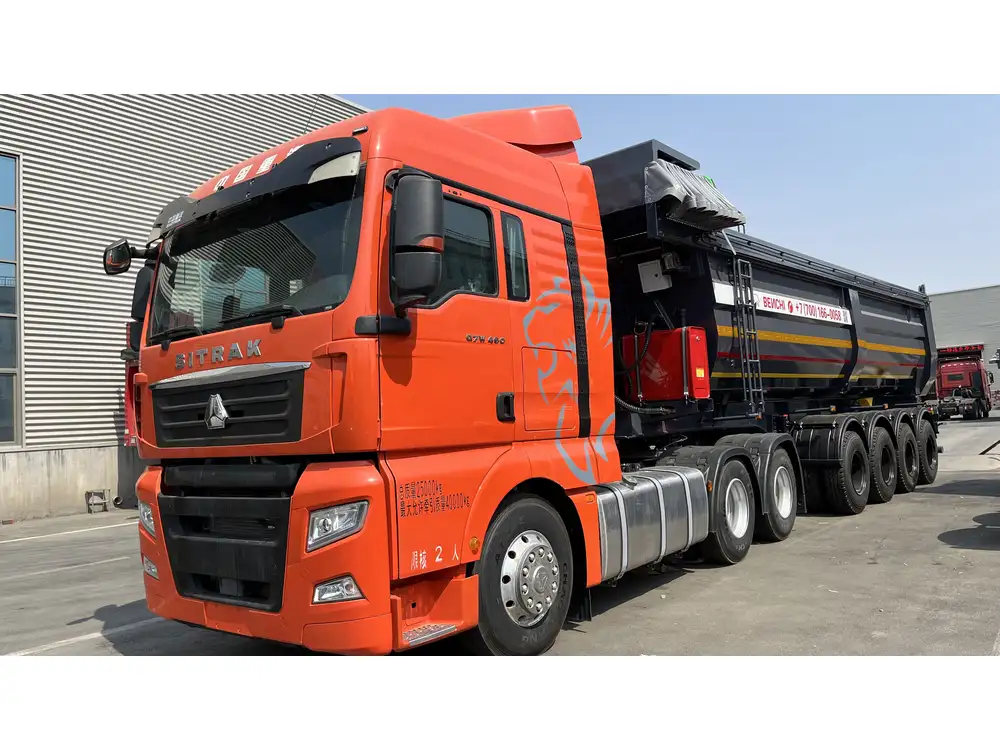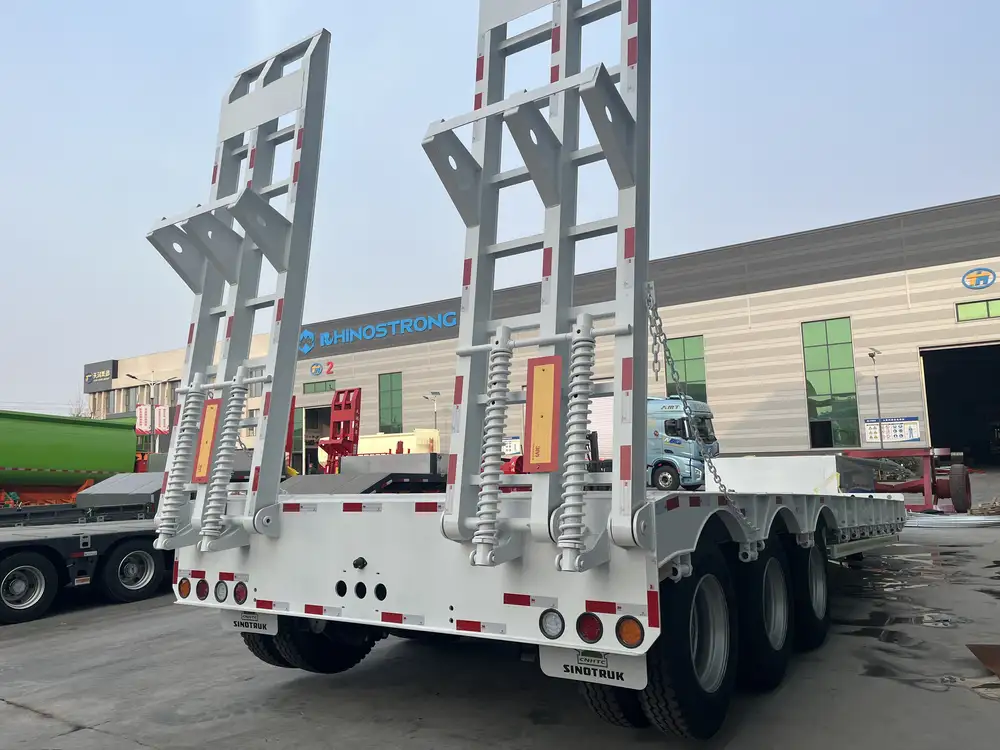In the world of transportation, semi-tank trailers play a pivotal role, especially in the logistics of transporting liquids and bulk materials. They are essential for various industries, including agriculture, fuel distribution, and manufacturing. One frequent inquiry among operators and fleet managers is, “How many gallons is a semi tank trailer?” This article delves into the intricacies of semi-tank trailers, their capacities, dimensions, standard configurations, and related topics to enhance understanding and facilitate informed decision-making.
Overview of Semi-Tank Trailers
Semi-tank trailers, also known as tanker trailers, are specialized vehicles designed to transport liquids—ranging from fuels and chemicals to food-grade materials. Their structure is engineered for safety, efficiency, and durability. It’s essential to recognize that the total capacity of these trailers varies significantly based on several factors, including trailer design, material type, and legal regulations.
Common Types of Semi-Tank Trailers
| Type | Description | Average Capacity |
|---|---|---|
| Fuel Tank Trailers | Designed for transporting gasoline, diesel, and other fuels. | 6,000 to 11,000 gallons |
| Chemical Tankers | Used for hauling a variety of chemicals; often specialized. | 5,000 to 6,500 gallons |
| Food Grade Tankers | Unlike standard tankers, these comply with sanitary regulations. | 5,000 to 8,000 gallons |
| Bulk Tank Trailers | Suitable for transporting dry bulk materials like cement. | Varies, often 1,500 to 3,500 cubic feet equivalent |

Capacity Considerations
The capacity of a semi-tank trailer is typically measured in gallons, but it’s worth noting that it can also be expressed in cubic feet, liters, or other volume units, depending on regional practices. The common range for standard capacities is as follows:
- Fuel Tank Trailers: Approximately 6,000 to 11,000 gallons (around 22,700 to 41,600 liters). The exact capacity depends on the design and the vehicle’s legal weight limits.
- Chemical Tankers: Average capacities tend to sit around 5,000 to 6,500 gallons (18,900 to 24,600 liters), but this can be modified based on specific transportation needs.
- Food Grade Tankers: They usually have a capacity between 5,000 and 8,000 gallons (18,900 to 30,300 liters), emphasizing sanitary construction and materials.
Factors Affecting Trailer Capacity
When assessing how many gallons a semi-tank trailer can hold, several factors come into play. Understanding these variables will help stakeholders make informed decisions tailored to their operational needs.
1. Legal Weight Limits
In many jurisdictions, the total combined weight of the truck and trailer—and thus the load it carries—is subject to legal restrictions. In the United States, for instance, federal regulations generally impose a maximum weight limit of 80,000 pounds (approximately 36,287 kilograms). Consequently, the tank’s material, size, and construction must all be optimized to align with safety regulations while maximizing liquid capacity.

2. Tank Design and Shape
The shape of the tank plays a significant role in determining capacity. Typically, semi-tank trailers are cylindrical, allowing for efficient volume usage. However, some trailers might incorporate additional features, like baffling systems to control the sloshing of liquids during transport. This design choice can slightly affect the effective capacity.
3. Material Specifications
The materials used for constructing tank trailers also influence capacity. Common materials include:
- Aluminum: Lightweight with good corrosion resistance, often used for fuel and food-grade tanks.
- Stainless Steel: More robust and resistant to corrosion; used extensively for chemical and hygiene-sensitive applications.
- Carbon Steel: Typically heavier and less resistant to corrosive materials but can be cost-effective for certain bulk materials.
4. Configuration and Provisions
Specialized configurations, such as multi-compartment designs, allow a semi-tank trailer to carry various products without contamination, albeit with a trade-off in total capacity per compartment.

Safety Measures and Regulations
Operating semi-tank trailers comes with stringent safety measures to prevent spills, leaks, and other hazards. These include:
- Pressure Relief Valves: Essential for preventing over-pressurization during transportation.
- Baffled Tanks: These reduce liquid movement visibility inside the tank, minimizing the risk of tipping over.
- Reflective Markings and Signs: Required for certain hazardous materials to ensure safety on public roadways.
- Regular Inspections: Maintaining compliance with safety regulations mandates periodic checks of the trailer’s integrity and functionality.
Cost Considerations in Semi-Tank Trailers
Investing in a semi-tank trailer involves understanding several cost factors, including initial purchase prices, maintenance expenses, and insurance considerations. Here’s a cost breakdown:
Initial Purchase Costs
The purchase price of semi-tank trailers can vary widely based on type and capacity:
- Fuel Tank Trailers: Ranging from $35,000 to $100,000.
- Chemical Tankers: Prices typically range between $50,000 to $120,000, based on specifications.
- Food Grade Tankers: Costing around $45,000 to $90,000, depending on required standards.

Maintenance Expenses
Ongoing maintenance is critical for operational efficiency and safety. Common expenses include:
- Routine Inspections: Estimated at $1,000 to $5,000 annually.
- Repairs: Costs can vary widely based on the issue but budgeting $500 to $3,000 yearly is prudent.
- Cleaning: Particularly for food-grade and chemical trailers, cleaning can range between $200 to $1,000 each use.
Insurance Considerations
Given the risks associated with transporting hazardous materials, insurance costs can be considerable, often exceeding $5,000 to $20,000 a year, based on the type of materials transported and driving history.
Conclusion: Making Informed Decisions
Understanding a semi-tank trailer’s capacity—commonly between 5,000 to 11,000 gallons—is crucial for fleet managers and operators to optimize their logistics and operational efficiency. By comprehensively examining factors such as legal weight limits, material specifications, and safety regulations, users can make informed decisions that align with their needs while maximizing profitability.
Prioritizing safety, maintenance, and legal compliance not only mitigates risks but also enhances the overall operational framework for transporting liquids efficiently. As the industry continues to evolve, staying abreast of technological advancements and regulatory changes will further empower stakeholders in their pursuits.

Further Reading and Resources
- Federal Motor Carrier Safety Administration (FMCSA): Provides regulations and compliance requirements.
- National Tank Truck Carriers (NTTC): Offers guidance on best practices for operation and maintenance of tank trailers.
- Industry Reports on Transportation Trends: Keeping up with market data can inform strategic decisions for purchasing and operating semi-tank trailers.
By addressing the intricacies involved in the operation and regulation of semi-tank trailers and their capacities, this article aims to serve as a robust resource for users seeking to enhance their knowledge and operational capabilities in the transportation sector.



